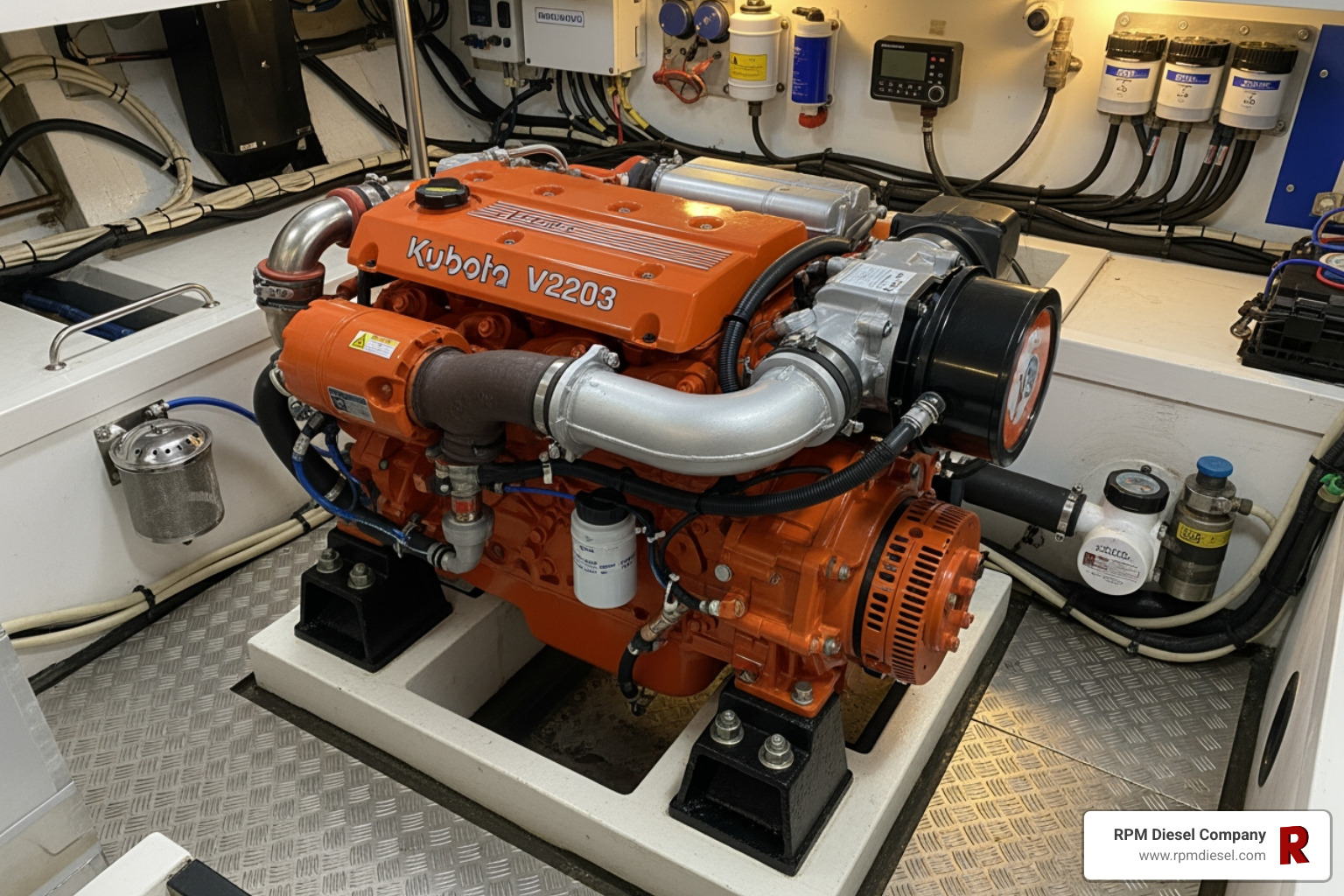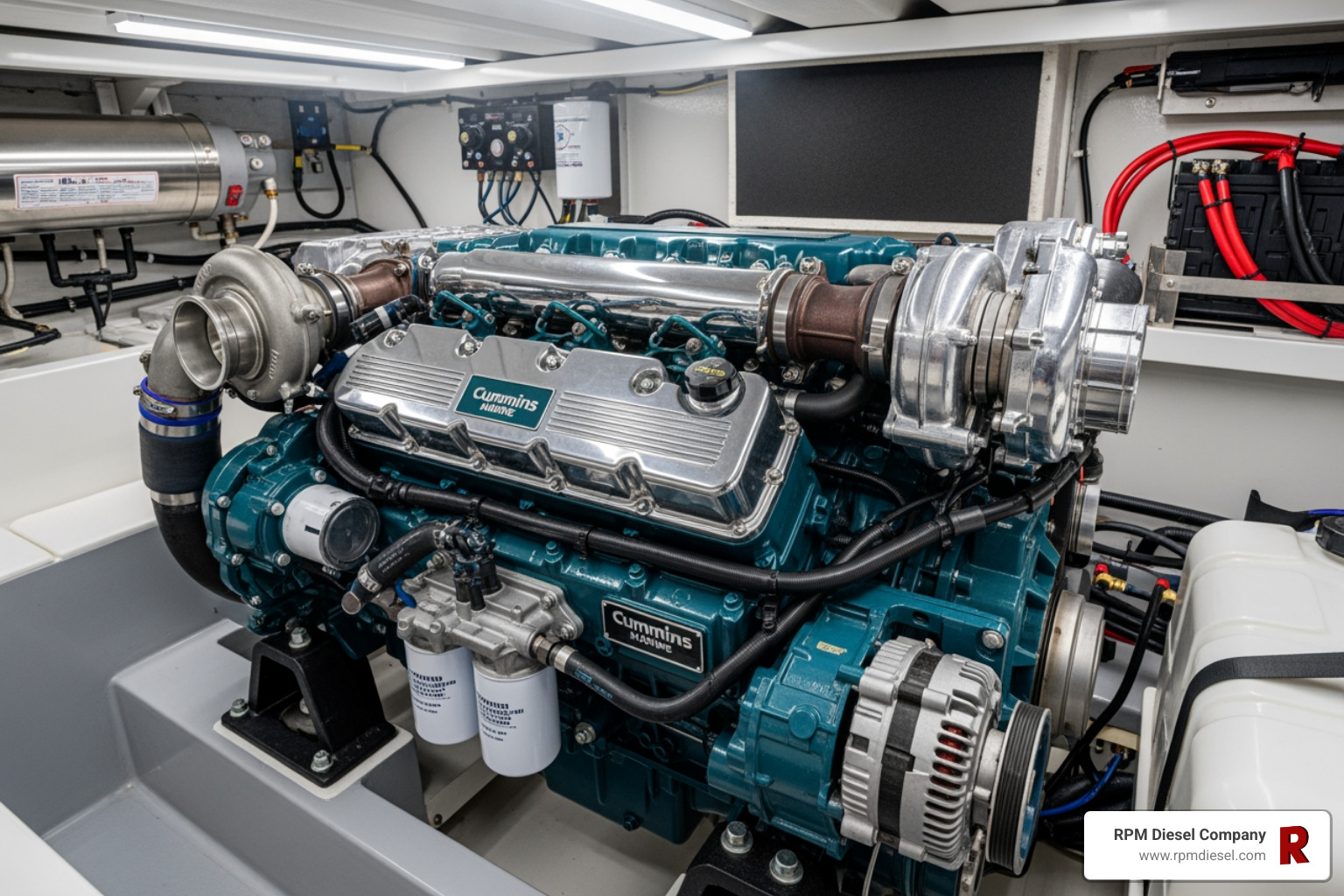Found in many diesel-powered vessels of all kinds, a Four-Stroke Diesel Engine is a type of engine that is so named because it requires that the piston complete four strokes while turning a crankshaft in order for internal combustion to occur. As the engine reciprocates, the piston moves up and down the cylinder twice, with the crankshaft revolving twice. The heat of the engine is then transferred to the fuel at constant pressure. The four strokes required for this process are the Induction or Intake Stroke, the Compression Stroke, the Power or Combustion stroke, and the Exhaust Stroke.
1. The Induction or Intake Stroke
During the Induction Stroke, new air for combustion is drawn into the engine by the clockwise rotating crankshaft rotating working in tandem with the piston moving up and down the cylinder. During this stroke, the diesel engine’s intake valve must be open – this allows the piston to create and pressurized vacuum with it’s downward motion, pulling the combustible mixture of air and fuel into the cylinder for igniting. The amount of power that is generated in any diesel engine relies on the amount fuel burnt in the combustion event, which in turn is dependent on the amount of air drawn in by the crankshaft – to increase their vessel’s horsepower, many marine diesel engine owners choose to install turbochargers to increase the intake of combustible material.
2. The Compression Stroke
The Compression Stroke occurs when the inlet valve closes and the piston compresses the air, pressurized by movements of the crankshaft and the flywheel, pushing it then into the diesel engine’s cylinder. As the energy is transferred into the air, the pressure and temperature increase even further to combustible levels in preparation for the next stroke. By the completion of the end of this stage both the engine’s intake and exhaust valves have been closed.
3. The Power or Combustion Stroke
This is the stroke represents the beginning of the Four Stroke Diesel Engine, and the one in which the actual combustion event occurs in the diesel engine. The pressurized fuel is atomized within the cylinder into miniscule droplets that quickly heat up to burning temperatures as the piston makes it’s pass over the engine interior’s TDC, or top dead center, and the mixture of fuel and air ignites, forcing the piston back down into the cylinder bore and causing the crankshaft to turn once again. This is the only stroke in the four-stroke cycle in the which the engine’s physical, mechanical parts are not performing the required action, as in this case the combustion reaction is actually providing the energy needed.
4. The Exhaust Stroke
The fourth and final stroke of the cycle, the Exhaust Stroke is just as important to the operation of a healthy Marine Diesel Engine as any of the other three strokes. As the piston is pulled back out of the cylinder bore by the rotating crankshaft, the engine’s exhaust valves begin to ease open. The vacuum pressure of the piston moving back up the cylinder then forces the spent mixture of air and fuel in the form of hot gases through the open exhaust valve. The piston then approaches it’s starting position at the diesel engine’s TDC, opening the intake valve and allow the 4 Stroke Diesel Engine Cycle to begin again.






